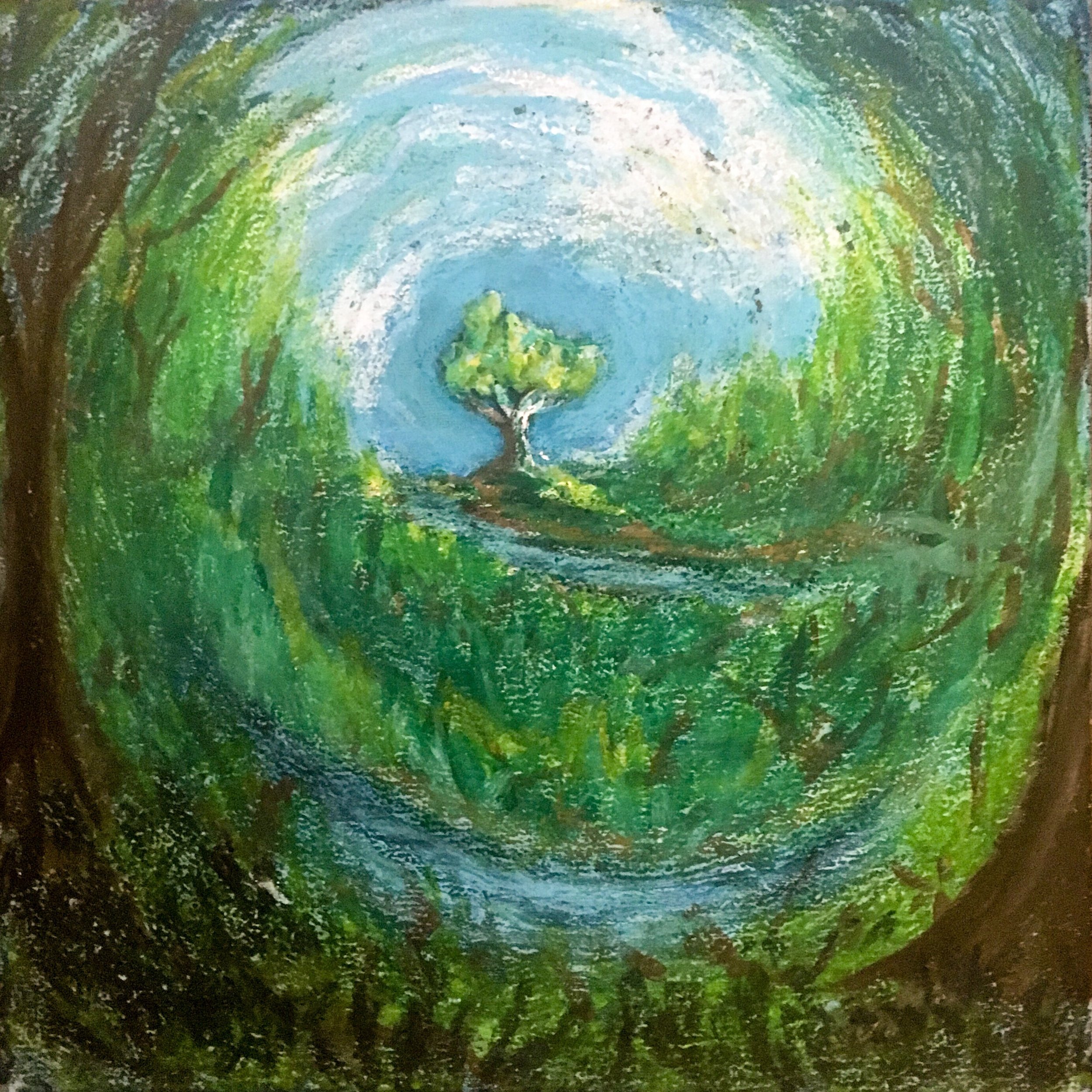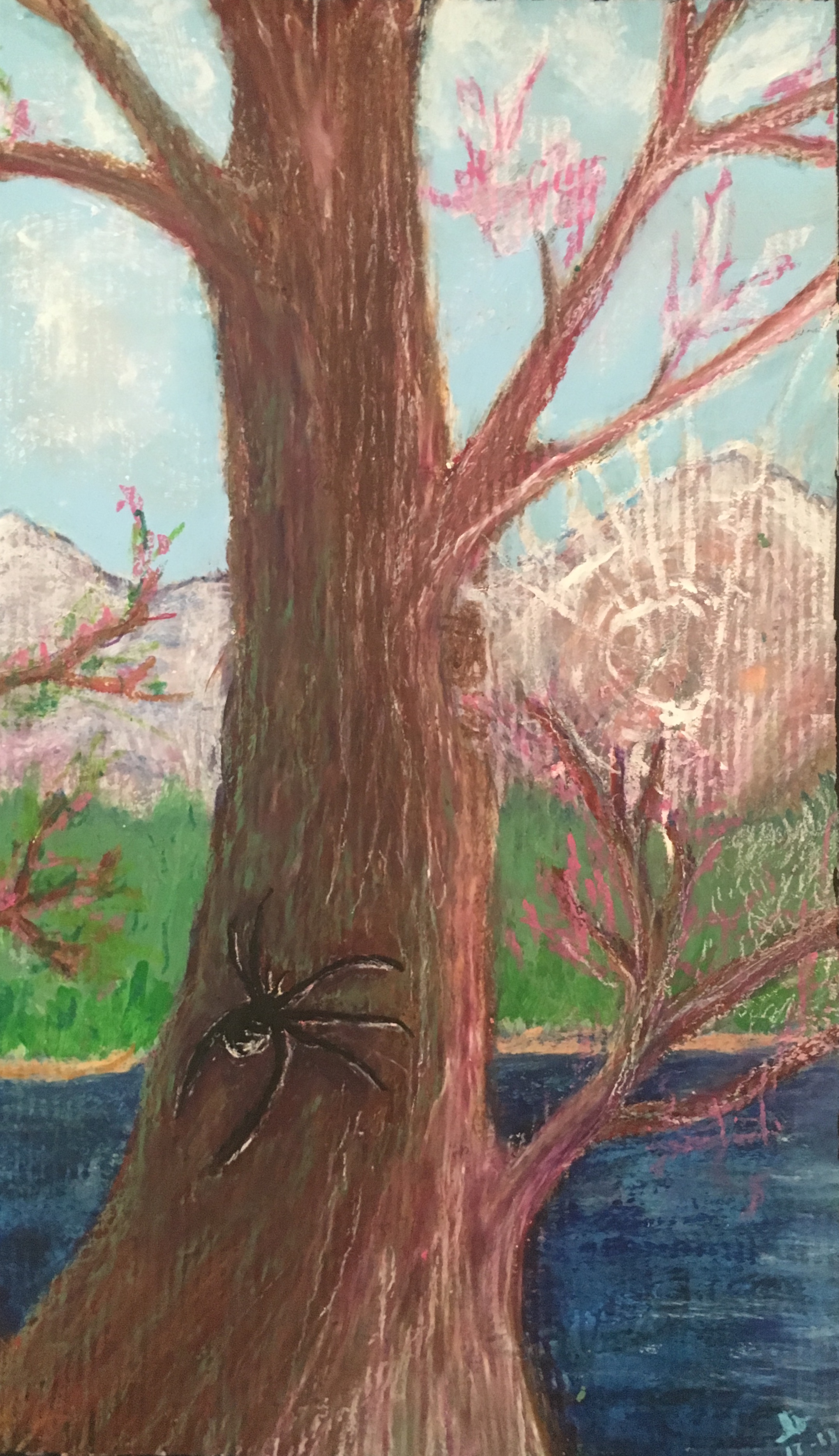Links provided on this page redirect to thoughtful sources that I have included in this entry as guides without expressed permission. I have taken efforts to credit these sources
(Souls pouring into the) Ocean of Grief (2015)
As we approach the holiday season, the pain of grief and loss can have a profound impact on ourselves or our loved ones. The holiday season is often portrayed as a time of joy, celebration, family, and renewal. Many of us may have a complicated relationship with the holidays however, associating these times as peppered with conflict and dysfunction. And for others, this may be the first holiday season without a cherished loved one, someone who served as an anchor that our family centered around or a beacon of light to guide us through the joys and stresses that accompany this time.
This time of year also serves as a time of harvest and preparation, of death and dormancy for plants, hibernation for animals, and a darkening and inward momentum for the cycles of day and night. It is a time where many of us are prone to decreases in energy and to vulnerability to changes in sleep patterns, disinterest in activities we usually love, and more sensitivity to our environment, shifting emotions, and habitual patterns of thoughts. These vulnerabilities become more overwhelming when we have lost the anchor and beacon that grounds us and lights our way.
Autumn Spirits (2014)
Basic mindfulness practice involves gently being with ourselves in the present moment for a period of time in order to increase our sensory awareness and learn to become non-attached to our thinking and our judgments as we go about our lives. My favorite saying in exploring mindfulness practices in counseling is, “simple but not easy.” Mindfulness is all about simply being with ourselves without grasping or throwing away what we find. This is not easy. When we are under stress, when we are in pain, when our emotions are intense, and when we are overcome with grief, staying in the present moment can seem like that farthest thing from helpful. It seems much more immediately relieving for us to reach to some comfort: a substance, a distraction, the indulgence of our judgments or self critical thoughts. When we can maintain courage, patience, humor, and compassion for ourselves, we can begin to build a capacity to stay present within these storms. We can learn to anchor ourselves, ride the waves of our experiences with grace and buoyancy, and grow in our ability to use the light of awareness to guide us through difficult times. Here are a few skills and strategies incorporating mindfulness and awareness practices, and basic self care, to help us stay centered and aware during this season of renewal.
Mandala for Healing Light (2016)
Practicing basic self care: Our basic self care exemplifies that concept of simple, but not easy. Taking care of ourselves during the holiday season can seem impractical when we are busy working, preparing for guests, or shopping in crowded places, all while managing all of the everyday expectations in our life. When grief arrives into our life, even the most basic of everyday tasks becomes an arduous chore. Basic self care includes getting enough sleep, drinking enough water, eating healthy meals on a regular schedule, taking care of our hygiene, and engaging in any kind of movement or exercise on a regular basis. Without these foundational components of our self care in tact, everything else is so much harder. It is so easy to skip a meal. Sleep is so challenging when our mind and body don’t cooperate with each other. So it becomes all the more important for us to start wherever we are and to trust our capacity to build back our capabilities to care for ourselves. Our bodies are resilient, especially when we give ourselves what we need. This is always where to start.
The practice of gently being with ourselves: Mindfulness practice can take so many forms and can serve many purposes. A mindfulness practice can be a way for us to regulate our body when we are overcome with emotion or stress. To start such a practice, we can simply find a relaxed posture and just try letting our exhale extend a little longer than our inhale. I recommend counting to 5 while you breath in and to 7 as you breathe out. Start there and see where this takes you. When you feel yourself settling into the moment and relaxing, invariably thoughts, emotions, judgements, and other distractions will arise. There are many ways to work with these distractions. You may try labeling them, visualizing them as clouds drifting through a blue sky or leaves floating down a stream, or perhaps you visualize filling them up into a balloon as you breathe in, then letting go of that balloon with your out breath while imagining these thoughts zooming away in every direction.
The website mindful.org offers a thoughtful collection of guided beginning mindfulness practices: https://www.mindful.org/audio-resources-for-mindfulness-meditation/
Another way to practice mindfulness is to explore our senses in the present moment. Utilizing any of our five senses to stay anchored to the present moment allows up to shift away from the suffering that our intense mental focus on stressors and grief can perpetuate and enlarge. This can also give ourselves an opportunity to open up to the rest of our world, which can have a profound effect on how we experience loss. Try sitting somewhere that is relatively quiet and gently breathe as before. Gently shift your attention from your breath to what you are hearing. Notice the textures, the vibrations, the resonance of the sound. Notice the space in between the sound. Do this with what you see around you, with what you feel. Practice noticing the spaces in between the thoughts that will invariably arise. Try this practice with a favorite scent or try spending at least five minutes slowly and methodically savoring a favorite food such as a piece of dark chocolate, staying curious about what you observe.
Loving kindness: Practicing a loving kindness meditation (sometimes called “metta” meditation) can be a powerful way to cultivate kindness for ourselves and others. Bringing our focus and attention in the present moment to sending good will, love, and warmth towards ourselves and others on a regular basis can change the way we approach our world. During difficult times, this practice can help boost our capacity and emotional endurance.
Here is a link with more information on loving kindness practice and an audio guide to exlore: https://ggia.berkeley.edu/practice/loving_kindness_meditation
Sailing Together (2018)
Maintaining openness and curiosity is a key to mindfulness practice. But practice is as much about what you do away from the meditation cushion or yoga mat as it is about these exercises. Cultivating awareness in our daily lives can allow us to notice more nuance and opportunity in each moment. We can begin to open up our heart when we feel that it is broken. Gentleness, self love, and cultivating objective awareness can serve as the gifts that we give to ourselves during this time of reflection and renewal.













